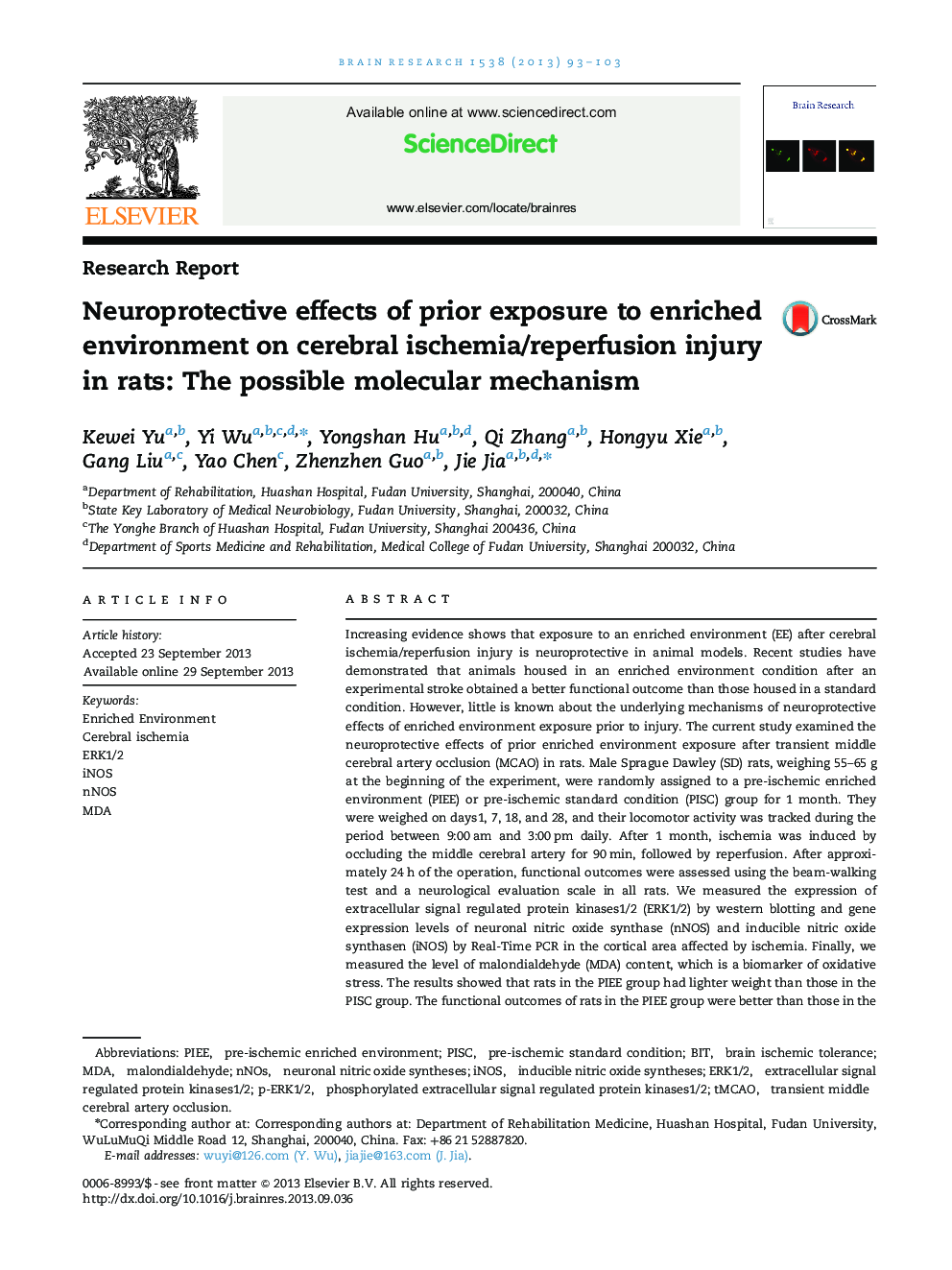| کد مقاله | کد نشریه | سال انتشار | مقاله انگلیسی | نسخه تمام متن |
|---|---|---|---|---|
| 6263684 | 1613901 | 2013 | 11 صفحه PDF | دانلود رایگان |
- EE could improve voluntary activity of rats.
- Positive correlation between the body weight and neurological deficits.
- Positive correlation between p-ERK1/2 and neurological deficits.
- PIEE may reduce free radicals and oxidative stress.
- EE may promote resistance to cerebral ischemia-reperfusion injury.
Increasing evidence shows that exposure to an enriched environment (EE) after cerebral ischemia/reperfusion injury is neuroprotective in animal models. Recent studies have demonstrated that animals housed in an enriched environment condition after an experimental stroke obtained a better functional outcome than those housed in a standard condition. However, little is known about the underlying mechanisms of neuroprotective effects of enriched environment exposure prior to injury. The current study examined the neuroprotective effects of prior enriched environment exposure after transient middle cerebral artery occlusion (MCAO) in rats. Male Sprague Dawley (SD) rats, weighing 55-65Â g at the beginning of the experiment, were randomly assigned to a pre-ischemic enriched environment (PIEE) or pre-ischemic standard condition (PISC) group for 1 month. They were weighed on days1, 7, 18, and 28, and their locomotor activity was tracked during the period between 9:00Â am and 3:00Â pm daily. After 1 month, ischemia was induced by occluding the middle cerebral artery for 90Â min, followed by reperfusion. After approximately 24Â h of the operation, functional outcomes were assessed using the beam-walking test and a neurological evaluation scale in all rats. We measured the expression of extracellular signal regulated protein kinases1/2 (ERK1/2) by western blotting and gene expression levels of neuronal nitric oxide synthase (nNOS) and inducible nitric oxide synthasen (iNOS) by Real-Time PCR in the cortical area affected by ischemia. Finally, we measured the level of malondialdehyde (MDA) content, which is a biomarker of oxidative stress. The results showed that rats in the PIEE group had lighter weight than those in the PISC group. The functional outcomes of rats in the PIEE group were better than those in the PISC group, and substances associated with inflammation, such as MDA, nNOS, iNOS, and phospho-ERK1/2, were lower in the PIEE group compared with the PISC group. These results indicate that enriched environment may provide neuroprotection via ischemic preconditioning and enhance resilience to cerebral ischemia.
Journal: Brain Research - Volume 1538, 13 November 2013, Pages 93-103
